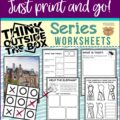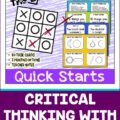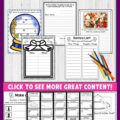Critical thinking is a skill that your students will use well into their adult lives. It’s not something that necessarily comes naturally to everyone, though. This means it must be actively taught as a specific skill. Here are some ideas for fun critical thinking activities for your young students. And don’t miss my earlier post on thinking skills.
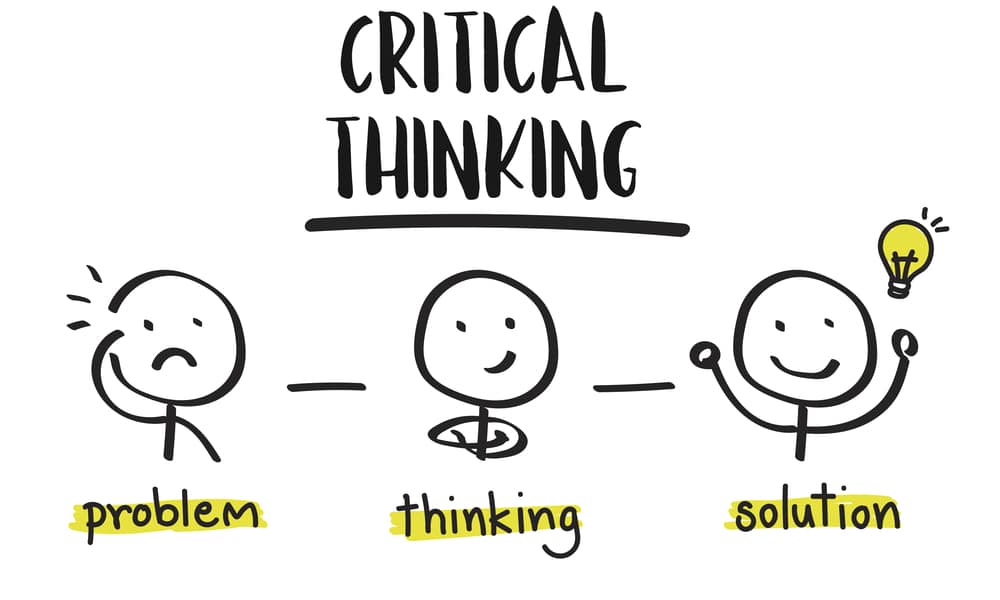
critical thinking activities
Analyzing information using logic, creativity and reasoning involves critical thinking skills. There are many ways you can incorporate this skill into other lessons or activities.
What Happened Next?
This seems like a simple game, but it’s great for exercising imagination and creativity.
Start off with a story prompt that you give your students. For example, “Once there was a little green frog.” One of the students adds a sentence, taking the story in a new direction. Then continue around the room, having each student add their bit of the story.
This can also be done in small groups, with you adding a line after each child adds one. The stories usually end up being totally ridiculous, but that’s half the fun!
Categories
Another seemingly simple game that requires analysis and creativity.
Divide students into groups and give them a category title or theme, such as Snacks or Summertime.
Students list as many words as they can think of that fit the category within a specific time, usually a minute and a half.
At the end of the time, the groups count their words. The team with the most words wins. Challenge them to beat their own number.
A different play on this would be to give the groups a specific number of words that they should try to think of. The group that comes closest to coming up with that number of words wins.
The Value of Storytime
Reading aloud to your students is valuable in and of itself. But intentionally adding critical thinking questions to your reading takes the simple idea of storytime and ramps it up to a whole new level
Make predictions
- By looking at the cover, what do you predict the story will be about?
- Read 3/4 of the story and ask students to predict the ending.
- If characters are making a decision about something, ask them to predict what the decision will be.
Main idea
Students often struggle with summarizing a story or reading passage. Their summaries usually tend to be too broad or too specific, often based on the first sentence.
Ask your students to tell you in one sentence what a story or passage is about. This will help them to clearly form a concise summary.
make an inference
The ability to make inferences is a necessary skill needed for critical thinking.
Use illustrations in stories to form questions where students need to infer the answer. For example, if the picture shows an outdoor scene, ask them to tell you what season it is.
Critical Thinking Ideas and Puzzles
Puzzles are always a fun way for students to utilize critical thinking.
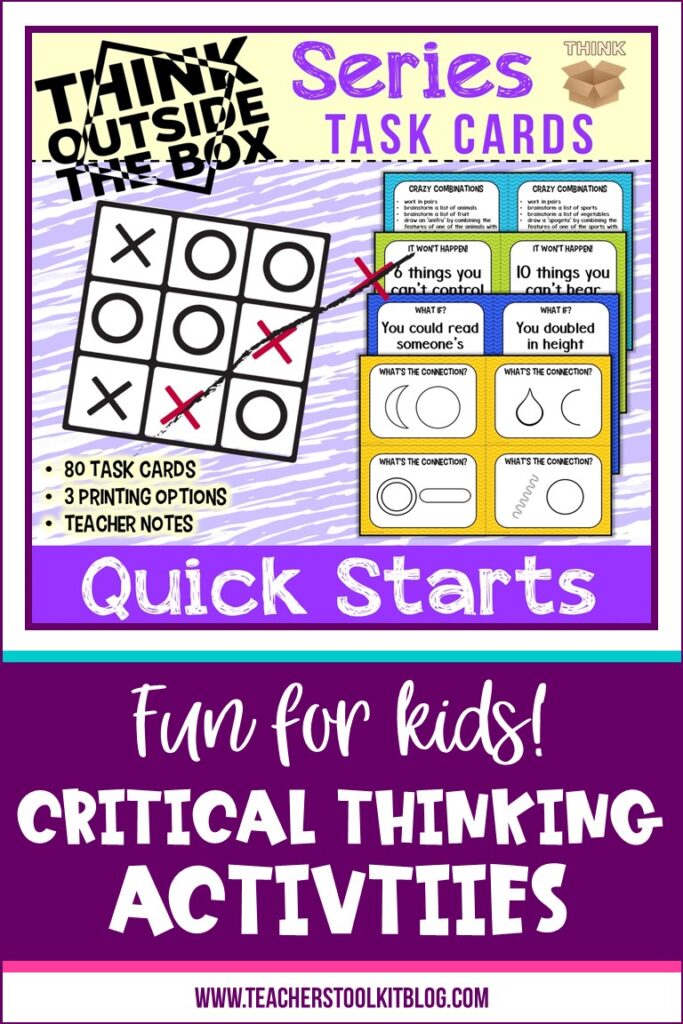
These Critical Thinking Activities Task Cards provide teachers with activities and puzzles to help students develop critical thinking skills. In this pack you will find 80 quick start task cards – 4 cards per page. Your elementary students will love trying to figure out the puzzle or challenge and you will love knowing that they are using higher order thinking skills!
These ‘quick starts’ are ideal warm-up activities for the beginning of a lesson. They should be used flexibly and can be used in any order, at any time. As these task cards are intended for repeated use, I would suggest laminating them for durability.
Today’s students are the problem-solvers of the future. If they are taught factual knowledge only, they tend to respond with conventionally correct answers rather than exploring creative solutions. All students can learn to think critically and creatively.
Students need to be able to judge, analyze and think critically in order to participate fully in a democratic and technological society. This can be achieved if the teacher recognizes the value of thinking skills and provides opportunities for the thinking processes to be modeled and developed.
When to use: (10-15 minutes group/class)
- at the beginning of a lesson
- during circle time
Let us know if you try any of these activities. We’d love to know how it goes!
And check out my other critical thinking resources!
